 (At this point what could surprise you? Next to nothing!)
(At this point what could surprise you? Next to nothing!)
John Calipari has been in somewhat of a reflective mood lately. Whereas Calipari is usually one to "stay in the moment," at times in the past week or so he has allowed his thoughts to drift toward the future of the program. In the midst of this year's trials and tribulations,
Calipari has referred to the struggles as a tool that will only help him in the future as a coach. His head coaching career has spanned well over 20 years, but his time at Kentucky has been relatively short in comparison. For a coach whom many would like to lead you to believe recruits the exact same type of player year in and year out, playing the exact same type of system, resulting in the exact same end game (a contender in addition to a crop of departing NBA draftees)... Calipari has seen a lot. In just short of 4 completed seasons at Kentucky, John Calipari has faced or dealt with a surprisingly large variety of scenarios and situations.
In just 4 seasons at Kentucky, has Cal just about seen it all? Maybe "all" is a stretch, but he's certainly seen a lot with the 4 teams he's coached...
Teams with a significant amount of returning talent: (1st year and 3rd year)

For a guy known to have a program in which talent is turned over on a regular basis, Calipari has twice experienced teams with rosters containing at least 3-4 returning players with experience. In fact, in his first season, Calipari inherited a roster with a number of returning players he did not recruit. Last year, he had a roster with the likes of Darius Miller, Terrence Jones and Doron Lamb.
Teams with a very low number of returning players with experience: (2nd and 4th year)

Never has Calipari faced a returning team with less Kentucky basketball experience than this year's team. Even though Ryan Harrow and Julius Mays were not college basketball rookies, they hadn't played at Kentucky. Kyle Wiltjer was the only returning player with significant experience, and even he was a role player at best on last year's national championship team. Two years ago, Calipari was also faced with a team lacking experience. Only Darius Miller and DeAndre Liggins had significant game experience. Josh Harrellson had played a very limited role up until that point.
Teams with big rotations (by Calipari standards): 1st year

Calipari faced an interesting situation in his first season. Calipari had the #1 recruiting class in the country, but he also had players like Perry Stevenson, Ramon Harris, Patrick Patterson, DeAndre Liggins and Darius Miller. All 5 of those guys played signifiant minutes during the Billy Gillispie era before Cal arrived. Calipari didn't have to use some of those older guys in as big of roles, but he had 10 players on his team he could go to if need be: DeMarcus Cousins, John Wall, Eric Bledsoe, Darnell Dodson, Ramon Harris, DeAndre Liggins, Darius Miller, Daniel Orton, Patrick Patterson, and Perry Stevenson. Two of the last players in his rotation (Stevenson and Harris) had been full-time starters or played starting minutes during most of Gillispie's final year. On that roster, Calipari had 9 players who averaged 11 minutes or more per game.
Teams with a very small rotation: (2nd year)

John Calipari managed to go through an entire season essentially using a 6-man rotation. When Calipari led that team to a Final 4, the notion of needing a "deep rotation" to win was nearly thrown out the window. When Enes Kanter wasn't cleared to play, the minutes were split between only 6 players, with Eloy Vargas playing very sparingly. Between the 6-man rotation of Darius Miller, Brandon Knight, Doron Lamb, DeAndre Liggins, Josh Harrellson and Terrence Jones, each player in that group averaged at least 28.4 minutes per game.
Teams built to run: (1st year)

Besides DeMarcus Cousins and his goofy missing tooth smile, my lasting memory of that 2009-2010 team will always be of John Wall streaking down the court on a fast break. Wall and Eric Bledsoe were two of the fastest and most athletic guards Calipari has coached while at Kentucky. Kentucky also had big men in Cousins and Patterson who were willing and able to run the court with those 2, leading to countless fast break opportunities. That team was phenomenal in transition, with 1-on-1 finishers at every position. That team wasn't exceptional in the half-court, but they could turn teams over and make them pay for it with points at an impressive clip.
Teams built upon being great at half-court execution: (2nd year)

Unlike many Calipari teams of the past, the squad led by Brandon Knight was built upon being very efficient and effective in the half-court setting. That team was not built to run or blessed with overbearing athleticism. The 2010-2011 team became lethal in the Brandon Knight/Josh Harrellson pick and roll offense. Led by Knight, the team was able to handle lengthy offensive possessions when faced with man-to-man or zone defenses because they had the shooters (Knight, Lamb, Miller).
Teams built to do both (run and execute in the half-court): (3rd year)

Want to win a national championship? Find a team who can do both (run and execute). No matter what kind of defense or style the opposition threw at last year's Kentucky team, the Cats had the players and poise to handle it. Want to speed them up? No problem. Want to grind it out? No problem.
Exceptional defensive teams: (2nd and 3rd year)

Two words: Lockdown defender. Two names: DeAndre Liggins and Michael Kidd-Gilchrist. Both of those players were integral to Calipari's teams' success in his 2nd and 3rd year. Especially during Kentucky's post-season run, Liggins was able to completely eliminate the other teams' best player. The rest of Kentucky's team was underrated as individual defenders and they were able to handle the other 4 players on the court. The other team was often completely disoriented when Liggins took away either the best player or the key facilitator (remember Aaron Craft?) MKG was an individual beast defensively, but that whole team was phenomenal. Anthony Davis was the best shot blocker in the country. Marquis Teague was extremely physical and Darius Miller could guard multiple positions. That team was as sound defensively as any Calipari team has ever been.
Teams without a lockdown defender: (4th year)

For a while this season, Kentucky's defense was able to scrape by due to the safety net of a tremendous shot blocker down low in Nerlens Noel. When Noel went down, things became increasingly difficult for a team already not touted for its defense. Calipari has watched his team struggle night in and night out without a lockdown perimeter defender. Kentucky has had to find ways to win without an exceptional defense and without creating a ton of turnovers every game. The result hasn't always been pretty, but for the first time at Kentucky Calipari can say that he has coached a team without an exceptional defense.
A team plagued by injuries: (4th year)

One of the major things most people could point to when it came to Calipari heading into this season was that he had been fortunate not to have a team incur a major injury during the season. Calipari's Kentucky teams had been very healthy and fortunate up until this season. Between Ryan Harrow's mystery illness, Willie Cauley-Stein's mid-season knee surgery, and Nerlen's Noel's torn ACL, this Kentucky team has been hampered and shorthanded in almost every game all season. As soon as one player returned, another was gone.
Over-achieving Team: (2nd year)

When the realization that Enes Kanter would not be able to join the Kentucky team finally hit, Kentucky's chances for greatness seemed to decrease greatly. The Wildcats struggled on the road all season long in SEC play, and Brandon Knight took a while to develop as a true point guard. All of the pieces came together at the right time and Kentucky was able to get hot at the end of the season. Josh Harrellson far exceeded anyone's wildest dreams, even getting selected in the 2nd round of the NBA draft. With a 6-man rotation, an expanded role for Harrellson and a team filled with newcomers (Knight, Lamb, Jones), that Kentucky team overachieved in a major way to lead the program back to its first final four in over a decade.
Under-Achieving Team (4th year):

One could certainly debate that the pre-season expectations for this bunch were way too high to begin with, but any time a team with the #1 recruiting class finds itself on the NCAA tournament bubble in a down year for college basketball-- you have to consider the season to be a case of underachieving. Individually and collectively for large portions of the season, this Kentucky team has left many with a feeling of, "I think they can do better." The end result will ultimately determine how this team will be viewed in years to come, but for now, the season as a whole has fallen short of expectations for the pre-season #3 team.
Teams with high expectations entering the tournament: (1st year and 3rd year)

Kentucky had the longest undefeated streak in the nation before losing to Devan Downey in the middle of the season. With that said, Kentucky entered the 2009-2010 tournament as one of the favorites to win it all. Kentucky had the coveted #1 seed entering March Madness with a target squarely placed on their backs. Last year, Kentucky was the best team in the country from start to finish. Sure, they stumbled twice; but they were still the most dominant team from start to finish all season long. Kentucky entered the tournament as the odds on favorite to win and delivered with a huge target on their backs as well.
Teams fighting for NCAA Tournament Seeding and/or NCAA tournament lives: (2nd year and 4th year)
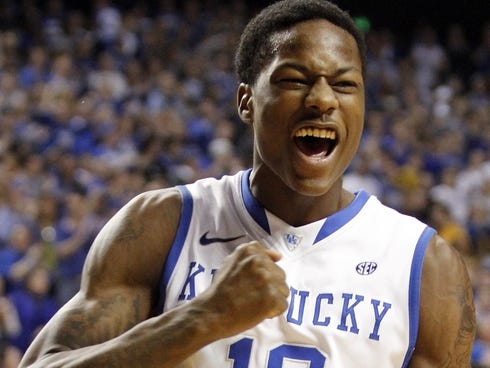
Following an up and down season, the 2010-2011 Kentucky team had to go on a huge late season run to secure a good seed in the NCAA tournament. Kentucky strung together a 6-game winning streak (including a run to become the SEC tournament champions) just at the right moment. When Kentucky started that 6-game winning streak, the seeding didn't look great for Kentucky's NCAA tournament hopes. By the end, many felt that the #4 seed was probably even a little unfortunate, especially considering the bracket of death Kentucky was placed in. This year, Kentucky is still fighting for its NCAA tournament life with one weekend remaining to boost the resume'. Kentucky is still on the bubble and not quite in a position of comfort just yet. I think we would all feel a lot more comfortable with the win on Friday.
Although no coach will ever feel as if he/she has truly experienced it all, in just 4 seasons at Kentucky-- John Calipari has seen and been through a lot. Calipari feels that this year's experience will help him in the future to deal with whatever may present itself. I would argue that the past 4 years have equipped him with the experience not to be surprised by much of anything.
The only thing that he might experience as a first next season is a starting line-up completely filled with freshmen. Obviously a lot can and probably will happen between now and then; but it's certainly not outside of the realm of possibilities.
 (At this point what could surprise you? Next to nothing!)
John Calipari has been in somewhat of a reflective mood lately. Whereas Calipari is usually one to "stay in the moment," at times in the past week or so he has allowed his thoughts to drift toward the future of the program. In the midst of this year's trials and tribulations, Calipari has referred to the struggles as a tool that will only help him in the future as a coach. His head coaching career has spanned well over 20 years, but his time at Kentucky has been relatively short in comparison. For a coach whom many would like to lead you to believe recruits the exact same type of player year in and year out, playing the exact same type of system, resulting in the exact same end game (a contender in addition to a crop of departing NBA draftees)... Calipari has seen a lot. In just short of 4 completed seasons at Kentucky, John Calipari has faced or dealt with a surprisingly large variety of scenarios and situations.
In just 4 seasons at Kentucky, has Cal just about seen it all? Maybe "all" is a stretch, but he's certainly seen a lot with the 4 teams he's coached...
Teams with a significant amount of returning talent: (1st year and 3rd year)
(At this point what could surprise you? Next to nothing!)
John Calipari has been in somewhat of a reflective mood lately. Whereas Calipari is usually one to "stay in the moment," at times in the past week or so he has allowed his thoughts to drift toward the future of the program. In the midst of this year's trials and tribulations, Calipari has referred to the struggles as a tool that will only help him in the future as a coach. His head coaching career has spanned well over 20 years, but his time at Kentucky has been relatively short in comparison. For a coach whom many would like to lead you to believe recruits the exact same type of player year in and year out, playing the exact same type of system, resulting in the exact same end game (a contender in addition to a crop of departing NBA draftees)... Calipari has seen a lot. In just short of 4 completed seasons at Kentucky, John Calipari has faced or dealt with a surprisingly large variety of scenarios and situations.
In just 4 seasons at Kentucky, has Cal just about seen it all? Maybe "all" is a stretch, but he's certainly seen a lot with the 4 teams he's coached...
Teams with a significant amount of returning talent: (1st year and 3rd year)
 For a guy known to have a program in which talent is turned over on a regular basis, Calipari has twice experienced teams with rosters containing at least 3-4 returning players with experience. In fact, in his first season, Calipari inherited a roster with a number of returning players he did not recruit. Last year, he had a roster with the likes of Darius Miller, Terrence Jones and Doron Lamb.
Teams with a very low number of returning players with experience: (2nd and 4th year)
For a guy known to have a program in which talent is turned over on a regular basis, Calipari has twice experienced teams with rosters containing at least 3-4 returning players with experience. In fact, in his first season, Calipari inherited a roster with a number of returning players he did not recruit. Last year, he had a roster with the likes of Darius Miller, Terrence Jones and Doron Lamb.
Teams with a very low number of returning players with experience: (2nd and 4th year)
 Never has Calipari faced a returning team with less Kentucky basketball experience than this year's team. Even though Ryan Harrow and Julius Mays were not college basketball rookies, they hadn't played at Kentucky. Kyle Wiltjer was the only returning player with significant experience, and even he was a role player at best on last year's national championship team. Two years ago, Calipari was also faced with a team lacking experience. Only Darius Miller and DeAndre Liggins had significant game experience. Josh Harrellson had played a very limited role up until that point.
Teams with big rotations (by Calipari standards): 1st year
Never has Calipari faced a returning team with less Kentucky basketball experience than this year's team. Even though Ryan Harrow and Julius Mays were not college basketball rookies, they hadn't played at Kentucky. Kyle Wiltjer was the only returning player with significant experience, and even he was a role player at best on last year's national championship team. Two years ago, Calipari was also faced with a team lacking experience. Only Darius Miller and DeAndre Liggins had significant game experience. Josh Harrellson had played a very limited role up until that point.
Teams with big rotations (by Calipari standards): 1st year
 Calipari faced an interesting situation in his first season. Calipari had the #1 recruiting class in the country, but he also had players like Perry Stevenson, Ramon Harris, Patrick Patterson, DeAndre Liggins and Darius Miller. All 5 of those guys played signifiant minutes during the Billy Gillispie era before Cal arrived. Calipari didn't have to use some of those older guys in as big of roles, but he had 10 players on his team he could go to if need be: DeMarcus Cousins, John Wall, Eric Bledsoe, Darnell Dodson, Ramon Harris, DeAndre Liggins, Darius Miller, Daniel Orton, Patrick Patterson, and Perry Stevenson. Two of the last players in his rotation (Stevenson and Harris) had been full-time starters or played starting minutes during most of Gillispie's final year. On that roster, Calipari had 9 players who averaged 11 minutes or more per game.
Teams with a very small rotation: (2nd year)
Calipari faced an interesting situation in his first season. Calipari had the #1 recruiting class in the country, but he also had players like Perry Stevenson, Ramon Harris, Patrick Patterson, DeAndre Liggins and Darius Miller. All 5 of those guys played signifiant minutes during the Billy Gillispie era before Cal arrived. Calipari didn't have to use some of those older guys in as big of roles, but he had 10 players on his team he could go to if need be: DeMarcus Cousins, John Wall, Eric Bledsoe, Darnell Dodson, Ramon Harris, DeAndre Liggins, Darius Miller, Daniel Orton, Patrick Patterson, and Perry Stevenson. Two of the last players in his rotation (Stevenson and Harris) had been full-time starters or played starting minutes during most of Gillispie's final year. On that roster, Calipari had 9 players who averaged 11 minutes or more per game.
Teams with a very small rotation: (2nd year)
 John Calipari managed to go through an entire season essentially using a 6-man rotation. When Calipari led that team to a Final 4, the notion of needing a "deep rotation" to win was nearly thrown out the window. When Enes Kanter wasn't cleared to play, the minutes were split between only 6 players, with Eloy Vargas playing very sparingly. Between the 6-man rotation of Darius Miller, Brandon Knight, Doron Lamb, DeAndre Liggins, Josh Harrellson and Terrence Jones, each player in that group averaged at least 28.4 minutes per game.
Teams built to run: (1st year)
John Calipari managed to go through an entire season essentially using a 6-man rotation. When Calipari led that team to a Final 4, the notion of needing a "deep rotation" to win was nearly thrown out the window. When Enes Kanter wasn't cleared to play, the minutes were split between only 6 players, with Eloy Vargas playing very sparingly. Between the 6-man rotation of Darius Miller, Brandon Knight, Doron Lamb, DeAndre Liggins, Josh Harrellson and Terrence Jones, each player in that group averaged at least 28.4 minutes per game.
Teams built to run: (1st year)
 Besides DeMarcus Cousins and his goofy missing tooth smile, my lasting memory of that 2009-2010 team will always be of John Wall streaking down the court on a fast break. Wall and Eric Bledsoe were two of the fastest and most athletic guards Calipari has coached while at Kentucky. Kentucky also had big men in Cousins and Patterson who were willing and able to run the court with those 2, leading to countless fast break opportunities. That team was phenomenal in transition, with 1-on-1 finishers at every position. That team wasn't exceptional in the half-court, but they could turn teams over and make them pay for it with points at an impressive clip.
Teams built upon being great at half-court execution: (2nd year)
Besides DeMarcus Cousins and his goofy missing tooth smile, my lasting memory of that 2009-2010 team will always be of John Wall streaking down the court on a fast break. Wall and Eric Bledsoe were two of the fastest and most athletic guards Calipari has coached while at Kentucky. Kentucky also had big men in Cousins and Patterson who were willing and able to run the court with those 2, leading to countless fast break opportunities. That team was phenomenal in transition, with 1-on-1 finishers at every position. That team wasn't exceptional in the half-court, but they could turn teams over and make them pay for it with points at an impressive clip.
Teams built upon being great at half-court execution: (2nd year)
 Unlike many Calipari teams of the past, the squad led by Brandon Knight was built upon being very efficient and effective in the half-court setting. That team was not built to run or blessed with overbearing athleticism. The 2010-2011 team became lethal in the Brandon Knight/Josh Harrellson pick and roll offense. Led by Knight, the team was able to handle lengthy offensive possessions when faced with man-to-man or zone defenses because they had the shooters (Knight, Lamb, Miller).
Teams built to do both (run and execute in the half-court): (3rd year)
Unlike many Calipari teams of the past, the squad led by Brandon Knight was built upon being very efficient and effective in the half-court setting. That team was not built to run or blessed with overbearing athleticism. The 2010-2011 team became lethal in the Brandon Knight/Josh Harrellson pick and roll offense. Led by Knight, the team was able to handle lengthy offensive possessions when faced with man-to-man or zone defenses because they had the shooters (Knight, Lamb, Miller).
Teams built to do both (run and execute in the half-court): (3rd year)
 Want to win a national championship? Find a team who can do both (run and execute). No matter what kind of defense or style the opposition threw at last year's Kentucky team, the Cats had the players and poise to handle it. Want to speed them up? No problem. Want to grind it out? No problem.
Exceptional defensive teams: (2nd and 3rd year)
Want to win a national championship? Find a team who can do both (run and execute). No matter what kind of defense or style the opposition threw at last year's Kentucky team, the Cats had the players and poise to handle it. Want to speed them up? No problem. Want to grind it out? No problem.
Exceptional defensive teams: (2nd and 3rd year)
 Two words: Lockdown defender. Two names: DeAndre Liggins and Michael Kidd-Gilchrist. Both of those players were integral to Calipari's teams' success in his 2nd and 3rd year. Especially during Kentucky's post-season run, Liggins was able to completely eliminate the other teams' best player. The rest of Kentucky's team was underrated as individual defenders and they were able to handle the other 4 players on the court. The other team was often completely disoriented when Liggins took away either the best player or the key facilitator (remember Aaron Craft?) MKG was an individual beast defensively, but that whole team was phenomenal. Anthony Davis was the best shot blocker in the country. Marquis Teague was extremely physical and Darius Miller could guard multiple positions. That team was as sound defensively as any Calipari team has ever been.
Teams without a lockdown defender: (4th year)
Two words: Lockdown defender. Two names: DeAndre Liggins and Michael Kidd-Gilchrist. Both of those players were integral to Calipari's teams' success in his 2nd and 3rd year. Especially during Kentucky's post-season run, Liggins was able to completely eliminate the other teams' best player. The rest of Kentucky's team was underrated as individual defenders and they were able to handle the other 4 players on the court. The other team was often completely disoriented when Liggins took away either the best player or the key facilitator (remember Aaron Craft?) MKG was an individual beast defensively, but that whole team was phenomenal. Anthony Davis was the best shot blocker in the country. Marquis Teague was extremely physical and Darius Miller could guard multiple positions. That team was as sound defensively as any Calipari team has ever been.
Teams without a lockdown defender: (4th year)
 For a while this season, Kentucky's defense was able to scrape by due to the safety net of a tremendous shot blocker down low in Nerlens Noel. When Noel went down, things became increasingly difficult for a team already not touted for its defense. Calipari has watched his team struggle night in and night out without a lockdown perimeter defender. Kentucky has had to find ways to win without an exceptional defense and without creating a ton of turnovers every game. The result hasn't always been pretty, but for the first time at Kentucky Calipari can say that he has coached a team without an exceptional defense.
A team plagued by injuries: (4th year)
For a while this season, Kentucky's defense was able to scrape by due to the safety net of a tremendous shot blocker down low in Nerlens Noel. When Noel went down, things became increasingly difficult for a team already not touted for its defense. Calipari has watched his team struggle night in and night out without a lockdown perimeter defender. Kentucky has had to find ways to win without an exceptional defense and without creating a ton of turnovers every game. The result hasn't always been pretty, but for the first time at Kentucky Calipari can say that he has coached a team without an exceptional defense.
A team plagued by injuries: (4th year)
 One of the major things most people could point to when it came to Calipari heading into this season was that he had been fortunate not to have a team incur a major injury during the season. Calipari's Kentucky teams had been very healthy and fortunate up until this season. Between Ryan Harrow's mystery illness, Willie Cauley-Stein's mid-season knee surgery, and Nerlen's Noel's torn ACL, this Kentucky team has been hampered and shorthanded in almost every game all season. As soon as one player returned, another was gone.
Over-achieving Team: (2nd year)
One of the major things most people could point to when it came to Calipari heading into this season was that he had been fortunate not to have a team incur a major injury during the season. Calipari's Kentucky teams had been very healthy and fortunate up until this season. Between Ryan Harrow's mystery illness, Willie Cauley-Stein's mid-season knee surgery, and Nerlen's Noel's torn ACL, this Kentucky team has been hampered and shorthanded in almost every game all season. As soon as one player returned, another was gone.
Over-achieving Team: (2nd year)
 When the realization that Enes Kanter would not be able to join the Kentucky team finally hit, Kentucky's chances for greatness seemed to decrease greatly. The Wildcats struggled on the road all season long in SEC play, and Brandon Knight took a while to develop as a true point guard. All of the pieces came together at the right time and Kentucky was able to get hot at the end of the season. Josh Harrellson far exceeded anyone's wildest dreams, even getting selected in the 2nd round of the NBA draft. With a 6-man rotation, an expanded role for Harrellson and a team filled with newcomers (Knight, Lamb, Jones), that Kentucky team overachieved in a major way to lead the program back to its first final four in over a decade.
Under-Achieving Team (4th year):
When the realization that Enes Kanter would not be able to join the Kentucky team finally hit, Kentucky's chances for greatness seemed to decrease greatly. The Wildcats struggled on the road all season long in SEC play, and Brandon Knight took a while to develop as a true point guard. All of the pieces came together at the right time and Kentucky was able to get hot at the end of the season. Josh Harrellson far exceeded anyone's wildest dreams, even getting selected in the 2nd round of the NBA draft. With a 6-man rotation, an expanded role for Harrellson and a team filled with newcomers (Knight, Lamb, Jones), that Kentucky team overachieved in a major way to lead the program back to its first final four in over a decade.
Under-Achieving Team (4th year):
 One could certainly debate that the pre-season expectations for this bunch were way too high to begin with, but any time a team with the #1 recruiting class finds itself on the NCAA tournament bubble in a down year for college basketball-- you have to consider the season to be a case of underachieving. Individually and collectively for large portions of the season, this Kentucky team has left many with a feeling of, "I think they can do better." The end result will ultimately determine how this team will be viewed in years to come, but for now, the season as a whole has fallen short of expectations for the pre-season #3 team.
Teams with high expectations entering the tournament: (1st year and 3rd year)
One could certainly debate that the pre-season expectations for this bunch were way too high to begin with, but any time a team with the #1 recruiting class finds itself on the NCAA tournament bubble in a down year for college basketball-- you have to consider the season to be a case of underachieving. Individually and collectively for large portions of the season, this Kentucky team has left many with a feeling of, "I think they can do better." The end result will ultimately determine how this team will be viewed in years to come, but for now, the season as a whole has fallen short of expectations for the pre-season #3 team.
Teams with high expectations entering the tournament: (1st year and 3rd year)
 Kentucky had the longest undefeated streak in the nation before losing to Devan Downey in the middle of the season. With that said, Kentucky entered the 2009-2010 tournament as one of the favorites to win it all. Kentucky had the coveted #1 seed entering March Madness with a target squarely placed on their backs. Last year, Kentucky was the best team in the country from start to finish. Sure, they stumbled twice; but they were still the most dominant team from start to finish all season long. Kentucky entered the tournament as the odds on favorite to win and delivered with a huge target on their backs as well.
Teams fighting for NCAA Tournament Seeding and/or NCAA tournament lives: (2nd year and 4th year)
Kentucky had the longest undefeated streak in the nation before losing to Devan Downey in the middle of the season. With that said, Kentucky entered the 2009-2010 tournament as one of the favorites to win it all. Kentucky had the coveted #1 seed entering March Madness with a target squarely placed on their backs. Last year, Kentucky was the best team in the country from start to finish. Sure, they stumbled twice; but they were still the most dominant team from start to finish all season long. Kentucky entered the tournament as the odds on favorite to win and delivered with a huge target on their backs as well.
Teams fighting for NCAA Tournament Seeding and/or NCAA tournament lives: (2nd year and 4th year)
 Following an up and down season, the 2010-2011 Kentucky team had to go on a huge late season run to secure a good seed in the NCAA tournament. Kentucky strung together a 6-game winning streak (including a run to become the SEC tournament champions) just at the right moment. When Kentucky started that 6-game winning streak, the seeding didn't look great for Kentucky's NCAA tournament hopes. By the end, many felt that the #4 seed was probably even a little unfortunate, especially considering the bracket of death Kentucky was placed in. This year, Kentucky is still fighting for its NCAA tournament life with one weekend remaining to boost the resume'. Kentucky is still on the bubble and not quite in a position of comfort just yet. I think we would all feel a lot more comfortable with the win on Friday.
Although no coach will ever feel as if he/she has truly experienced it all, in just 4 seasons at Kentucky-- John Calipari has seen and been through a lot. Calipari feels that this year's experience will help him in the future to deal with whatever may present itself. I would argue that the past 4 years have equipped him with the experience not to be surprised by much of anything. The only thing that he might experience as a first next season is a starting line-up completely filled with freshmen. Obviously a lot can and probably will happen between now and then; but it's certainly not outside of the realm of possibilities.
Following an up and down season, the 2010-2011 Kentucky team had to go on a huge late season run to secure a good seed in the NCAA tournament. Kentucky strung together a 6-game winning streak (including a run to become the SEC tournament champions) just at the right moment. When Kentucky started that 6-game winning streak, the seeding didn't look great for Kentucky's NCAA tournament hopes. By the end, many felt that the #4 seed was probably even a little unfortunate, especially considering the bracket of death Kentucky was placed in. This year, Kentucky is still fighting for its NCAA tournament life with one weekend remaining to boost the resume'. Kentucky is still on the bubble and not quite in a position of comfort just yet. I think we would all feel a lot more comfortable with the win on Friday.
Although no coach will ever feel as if he/she has truly experienced it all, in just 4 seasons at Kentucky-- John Calipari has seen and been through a lot. Calipari feels that this year's experience will help him in the future to deal with whatever may present itself. I would argue that the past 4 years have equipped him with the experience not to be surprised by much of anything. The only thing that he might experience as a first next season is a starting line-up completely filled with freshmen. Obviously a lot can and probably will happen between now and then; but it's certainly not outside of the realm of possibilities.
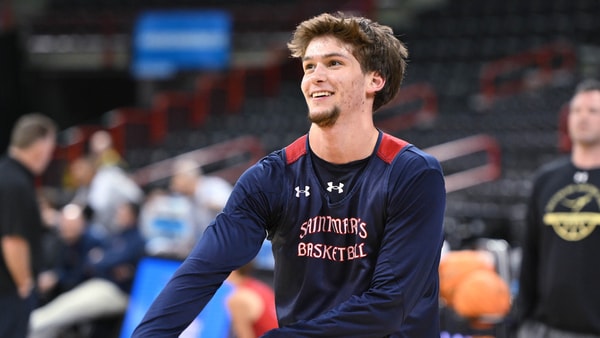
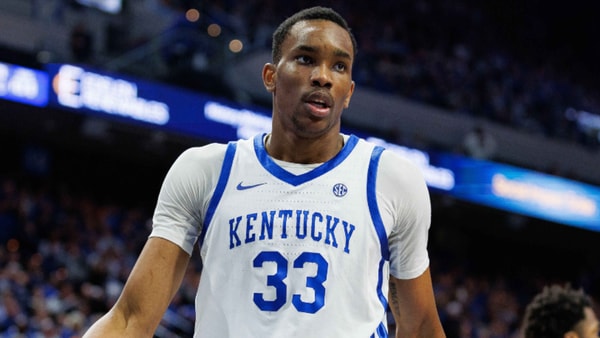
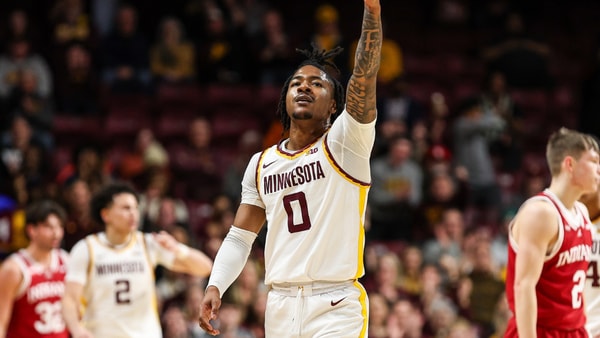
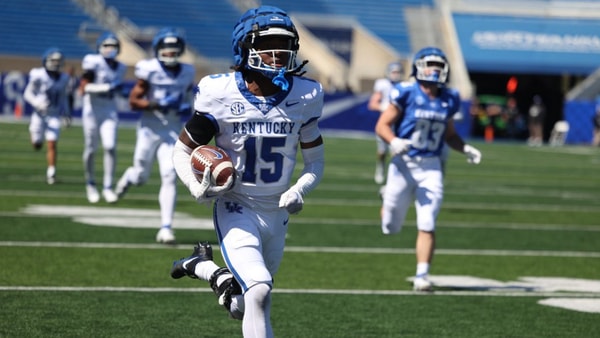
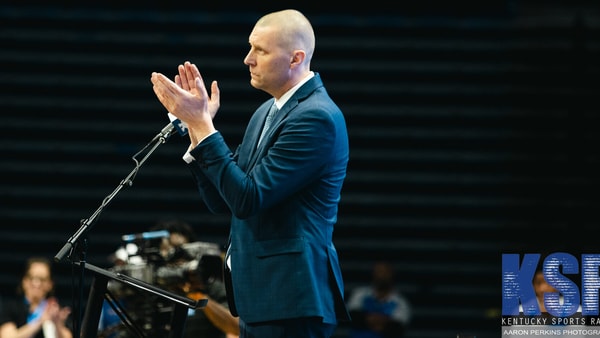
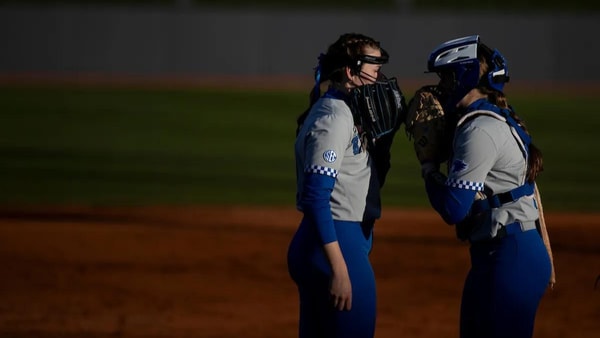
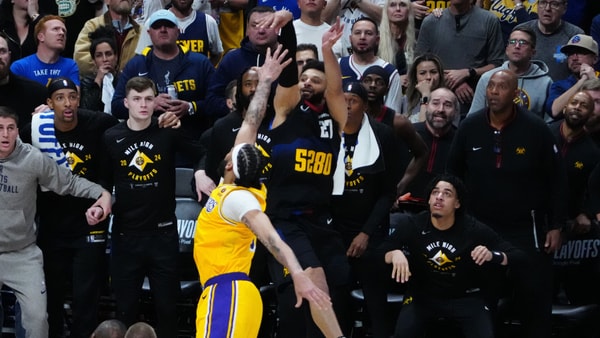
Discuss This Article
Comments have moved.
Join the conversation and talk about this article and all things Kentucky Sports in the new KSR Message Board.
KSBoard